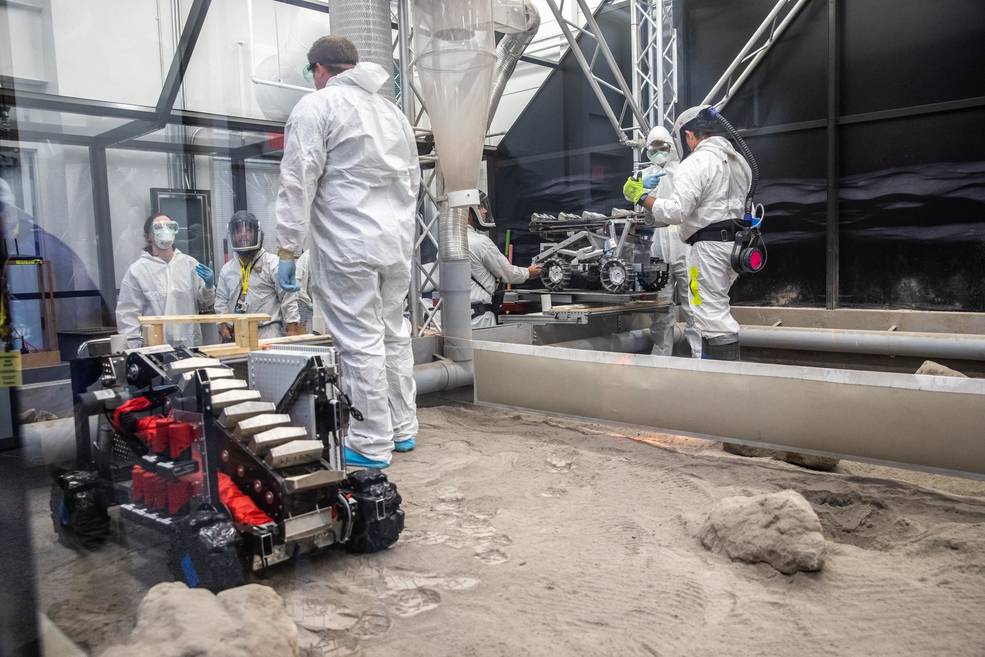NASA’s Lunabotics 2024 Challenge is Open
Aug 31, 2023

Across the country, teams comprising hundreds of undergraduate and graduate students – members of the Artemis generation – will vie to be one of the select few competing in the Lunabotics 2024 on-site challenge at NASA’s Kennedy Space Center Visitor Complex in Florida. For teams designing, building, and operating their own lunar robots for the competition, the long journey to Kennedy in May 2024 starts with the Lunabotics Challenge Guidebook.
Lunabotics is a part of the Artemis Student Challenges, designed to engage and retain students in STEM fields by expanding opportunities for student research and design in the areas of science, technology, engineering, and math. The project provides a competitive environment to foster innovative ideas and solutions that potentially could be used on future NASA missions to the Moon or even Mars.
Competing teams will apply the NASA systems engineering process and design, culminating in a prototype robot that can operate on the surface of the Moon in support of Artemis mission goals. While teams in previous years were tasked with mining lunar regolith, this year’s teams will design and build a robot that can traverse the rocky lunar terrain and construct a regolith-based berm.
“The necessary lunar surface tasks in this year’s competition are evolving to meet the NASA Artemis mission requirements,” said Rich Johanboeke, Lunabotics project manager in NASA’s Office of STEM Engagement at the agency’s Kennedy Space Center in Florida. “The berm structure would be useful for blast and ejecta protection during lunar landings and launches, shading cryogenic propellant tank farms, providing radiation protection around a nuclear power plant, and other critical uses.”
Teams will have until Friday, Sept. 22, to submit their proposals through NASA’s Stem Gateway portal, with accepted teams announced on Oct. 18. Teams will then have until the spring to create a project management plan, systems engineering paper, STEM engagement report, and a proof of life video of their robots in action. Teams vying for the grand prize must also submit a presentation and demonstration for review.
From May 15-17, 2024, the top 10 scoring teams will be invited to compete in the on-site challenge at the Artemis Arena inside Kennedy’s Visitor Complex. The arena is filled with Black Point-1 (BP-1) lunar regolith simulant, and teams’ robots will have to overcome at least three boulder obstacles placed on top of the BP-1 surface within the obstacle area before each competition attempt is made. The team that scores the most points in the competition receives the top award, the Lunabotics Grand Prize.
“A lunar investment is also an investment in our future,” Johanboeke said. “The competition has shown that the next generation is well prepared to apply the systems engineering process in other advanced technology fields and industries, benefiting them in their careers and our nation. Lunabotics is good for NASA, good for America, good for all of us.”
Coordinated by NASA’s Office of STEM Engagement, Lunabotics has taken place annually since 2010. The competition, formerly the Robotic Mining Competition, was held virtually last year, with more than 40 teams from 26 states and one commonwealth participating.
For more competition information, visit:
https://www.nasa.gov/learning-resources/lunabotics-challenge/